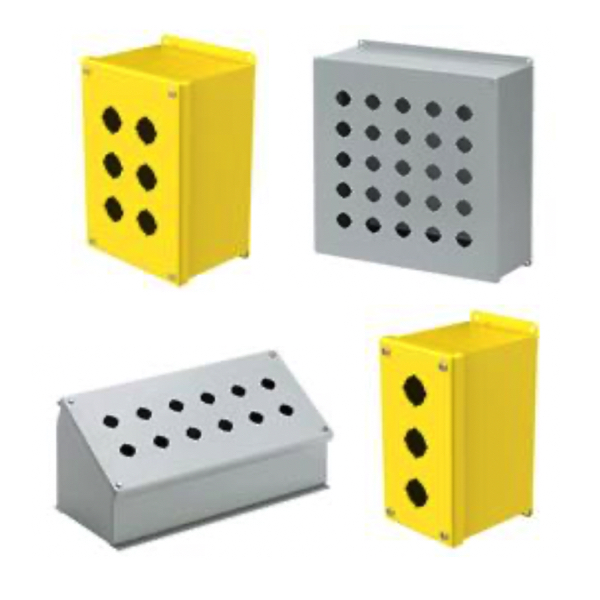Steel Push Button Enclosures

In industrial settings, reliable housing is a must for push buttons, pilot lights, and switches. Steel push-button enclosures fit this bill perfectly. They are made of steel, ensuring a robust structure that keeps the housed components safe from dust, dirt, and oil. These enclosures even protect against harmful external effects that are much rarer but still can be very damaging—like ice and intense heat.
Steel push button enclosures are a prime choice for use in tough industrial environments. They boast an exceptionally robust construction that makes them well-suited for nearly any application. Many models meet NEMA Type 12 standards, which means they offer protection against things like dust and non-corrosive water that might "drip, fall, or blow" onto the enclosure. They also come with convenient covers that give you easy access to the buttons on the front, so you can do any maintenance that might be necessary. Many of these enclosures also come with excellent security features, including locking mechanisms that help safeguard your important controls.
More Information about Steel Push Button Enclosures
Steel pushbutton enclosures are designed to meet the needs of various industrial applications, including manufacturing, automation, and energy. Their versatility is enhanced by customizable configurations, including the number of pre-drilled holes, hole sizes, and hole configurations; mounting options; and additional features like pilot light accommodation. Their robust construction and sensible designs ensure safety, efficiency, and reliability in applications that push the boundaries of available technology.
FAQs
Does an Eaton PB enclosure and PBX enclosure come standard with 30.5 mm pre-drilled holes?
Yes, Eaton PB enclosures and PBX enclosures typically come standard with 30.5 mm pre-drilled holes for compatibility with standard push buttons and pilot lights.
Does the width of pushbutton enclosures accommodate wiring and contacts?
Yes, the width of pushbutton enclosures is designed to accommodate wiring and contacts, ensuring sufficient space for proper installation and functionality.
Mounting Electrical Enclosures
Before mounting to any surface, it is important to understand how the hardware will interface with the enclosure. In many cases, the enclosures will have holes at the corners that can be used to attach any mounting hardware. It is common to see a mounting strut, commonly referring to as a Unistrut, being used with these electrical enclosures. The Unistrut can attach to the enclosure and provide a very strong connection point to either a wall, concrete or pole mount.
When mounting to a concrete wall, there are several things that should be considered to ensure it is done correctly. Industrial concrete anchors provide a very strong and reliable connection that can last a very long time. Make sure that the concrete is thick and strong enough for these types of anchors. Once the anchors have been installed, attach them to the mounting strut that is attached to the enclosure using hardware that is designed for that particular type of mounting strut.
When installing an electrical enclosure on a pole or mass, it is important to make sure that the pole can handle the weight of the enclosure. It is recommended that the pole is made of a very strong rigid material. At least two inch rigid galvanized conduit is recommended. Once the pole has been secured into the ground, strut clamps designed for the size of conduit will attach the enclosure.

